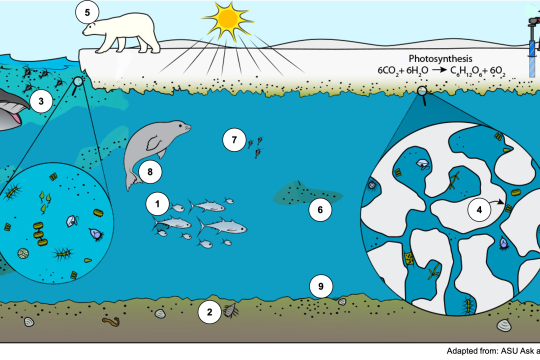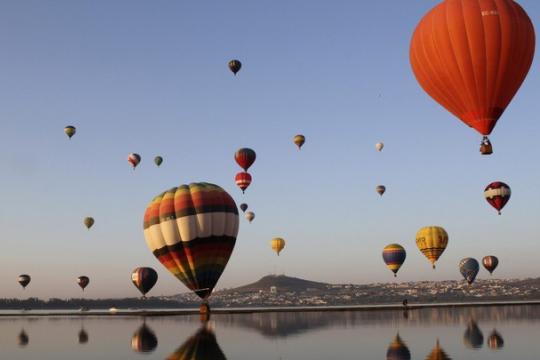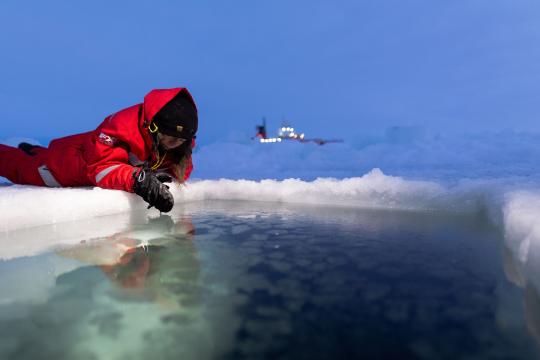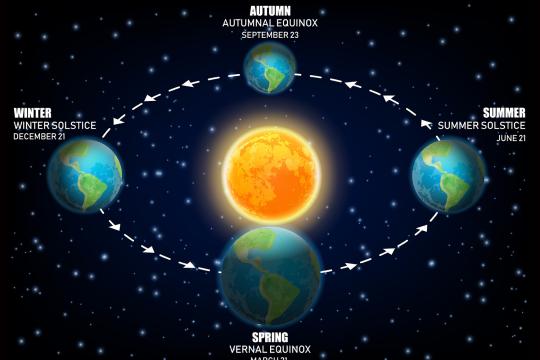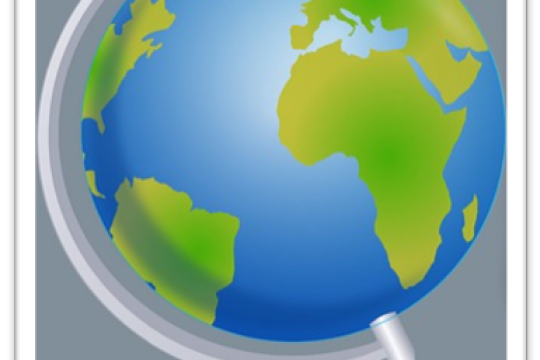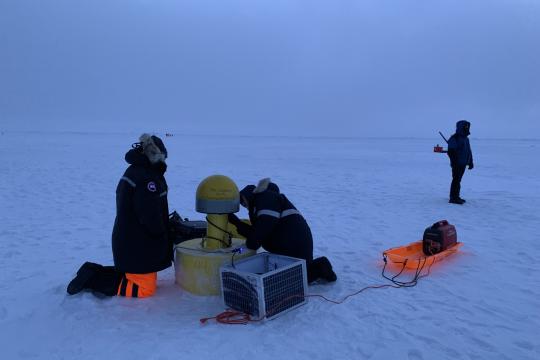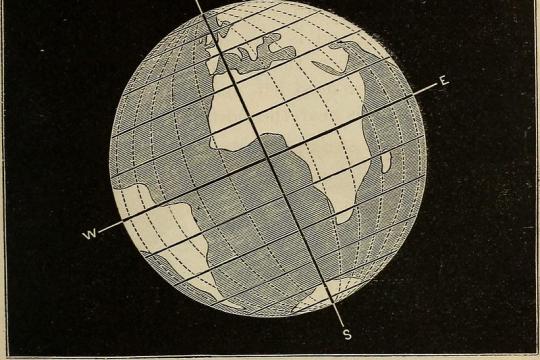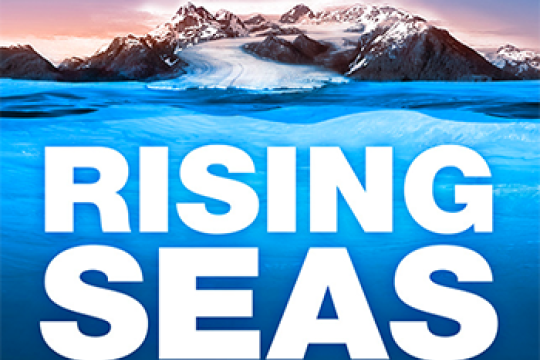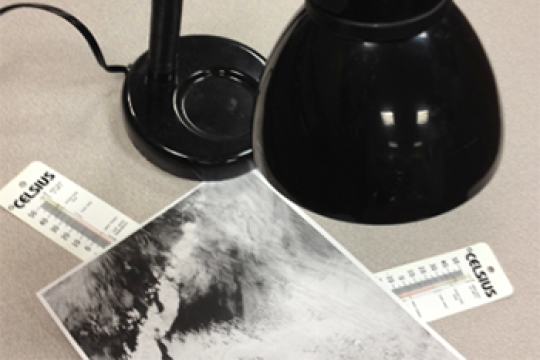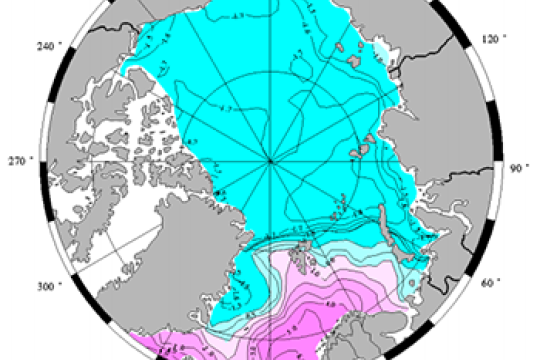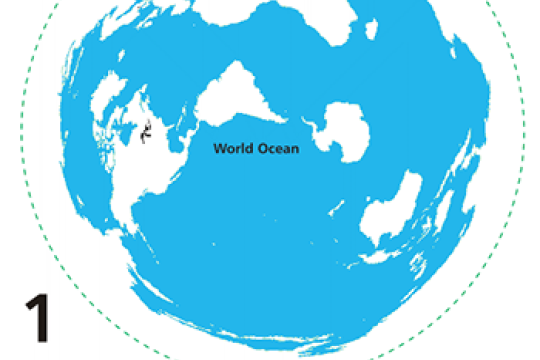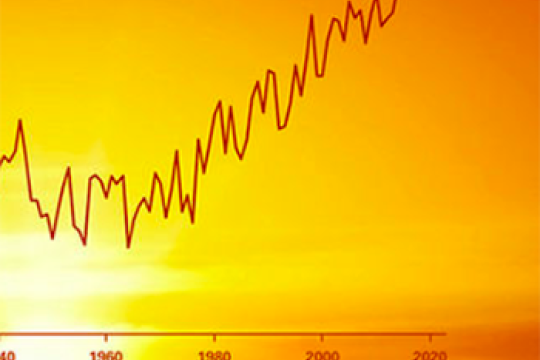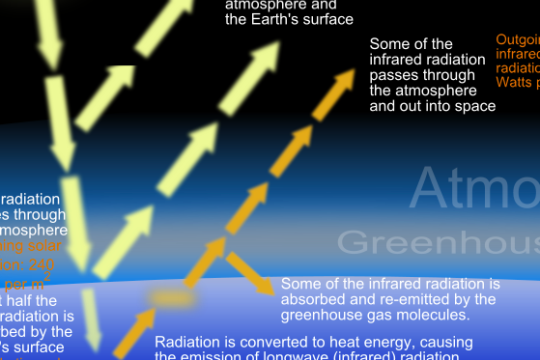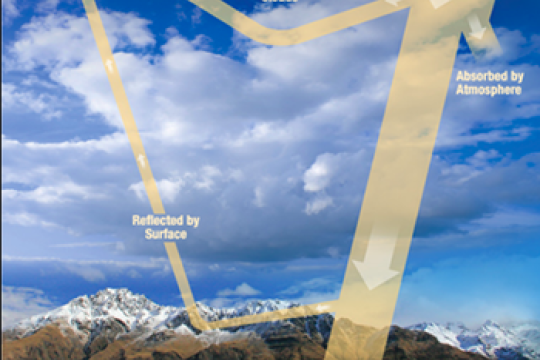Developing and using models
Quick Bite: Fill in the Food Web
What does an Arctic food web look like, and what are the relationships between its members? Find out in this Quick Bite activity.
Quick bite
Subject: Constructing explanations, Developing and using models, Ecosystems, Life science, mosaic monday, Polar Bears
Grade Level: 3-5, Middle School, High School
Developer: CIRES
What does an Arctic food web look like, and what are the relationships between its members? Find out in this Quick Bite activity.
Quick bite
Subject: Constructing explanations, Developing and using models, Ecosystems, Life science, mosaic monday, Polar Bears
Grade Level: 3-5, Middle School, High School
Developer: CIRES
Quick Bite: Pondering Pressure
What is air pressure? Explore this and more using a PhET simulation in this Quick Bite activity. Photo credit: Mario Armas/Reuters
Quick bite
Subject: Constructing explanations, Developing and using models, mosaic monday, Physical science
Grade Level: Middle School, High School
Developer: CIRES
What is air pressure? Explore this and more using a PhET simulation in this Quick Bite activity. Photo credit: Mario Armas/Reuters
Quick bite
Subject: Constructing explanations, Developing and using models, mosaic monday, Physical science
Grade Level: Middle School, High School
Developer: CIRES
Quick Bite: Budget Your Money, Budget Your Energy
Just like you and I might have a financial budget, Earth has an energy budget. In this Quick Bite activity, students will explore this energy budget and what happens if it changes. Photo credit: Stefan Hendricks/AWI
Project of Mosaic Quick bite
Subject: Atmosphere, Climate, Developing and using models, Earth science, mosaic monday
Grade Level: Middle School, High School, University/college
Developer: CIRES
Just like you and I might have a financial budget, Earth has an energy budget. In this Quick Bite activity, students will explore this energy budget and what happens if it changes. Photo credit: Stefan Hendricks/AWI
Project of Mosaic Quick bite
Subject: Atmosphere, Climate, Developing and using models, Earth science, mosaic monday
Grade Level: Middle School, High School, University/college
Developer: CIRES
Quick Bite: What is the Winter Solstice?
What is the winter solstice? Construct your explanation after watching a video of the earth as it orbits the Sun.
Project of Mosaic Quick bite
Subject: Developing and using models, Earth science, mosaic monday
Grade Level: Middle School, High School
Developer: CIRES
What is the winter solstice? Construct your explanation after watching a video of the earth as it orbits the Sun.
Project of Mosaic Quick bite
Subject: Developing and using models, Earth science, mosaic monday
Grade Level: Middle School, High School
Developer: CIRES
Quick Bite: Daylight to Darkness: Constructing an Explanation
Why does the amount of daylight the Arctic region gets throughout the year vary so much more than regions at lower latitudes? In this Quick Bite activity, students use an online interactive simulation to explore this question.
Project of Mosaic Quick bite
Subject: Constructing explanations, Developing and using models, Earth science, mosaic monday
Grade Level: Middle School, High School
Developer: CIRES
Why does the amount of daylight the Arctic region gets throughout the year vary so much more than regions at lower latitudes? In this Quick Bite activity, students use an online interactive simulation to explore this question.
Project of Mosaic Quick bite
Subject: Constructing explanations, Developing and using models, Earth science, mosaic monday
Grade Level: Middle School, High School
Developer: CIRES
Tracking Ice: Arctic Sea Ice and Mathematics Curriculum
Through the course of four modules, students will estimate the accuracy of their forecast and determine if it is fit for the purpose of guiding a search and rescue mission. After building their forecasting model, students will know how to access the coordinates of buoys tracked by the International Arctic Buoy Program (IABP) to make a sea ice drift forecast.
Lesson plan
Subject: Climate, Computational thinking, Developing and using models, Earth science, Oceans and ocean circulation, Sea ice
Grade Level: High School
Developer: SMILE Oregon State
Through the course of four modules, students will estimate the accuracy of their forecast and determine if it is fit for the purpose of guiding a search and rescue mission. After building their forecasting model, students will know how to access the coordinates of buoys tracked by the International Arctic Buoy Program (IABP) to make a sea ice drift forecast.
Lesson plan
Subject: Climate, Computational thinking, Developing and using models, Earth science, Oceans and ocean circulation, Sea ice
Grade Level: High School
Developer: SMILE Oregon State
Learn About the Equinox
Before she left to spend several weeks in the Arctic Ocean aboard an icebreaker on the MOSAiC expedition, PolarTREC educator Katie Gavenus put together a collection of educational resources for teaching about the equinox. Whether you're a fan of kinesthetic activities, art, or video lessons, there's something here for you!
Lesson plan
Subject: Constructing explanations, Developing and using models, Earth science
Grade Level: 3-5, Middle School, High School
Before she left to spend several weeks in the Arctic Ocean aboard an icebreaker on the MOSAiC expedition, PolarTREC educator Katie Gavenus put together a collection of educational resources for teaching about the equinox. Whether you're a fan of kinesthetic activities, art, or video lessons, there's something here for you!
Lesson plan
Subject: Constructing explanations, Developing and using models, Earth science
Grade Level: 3-5, Middle School, High School
Land Ice/Sea Ice: How does melting ice affect sea level?
Students use a simple model to compare sea level rise due to melting land ice versus melting sea ice.
Lesson plan
Subject: Asking questions, Constructing explanations, Developing and using models, Physical science, Sea ice
Grade Level: Middle School
Developer: U.S. Ice Drilling Program
Students use a simple model to compare sea level rise due to melting land ice versus melting sea ice.
Lesson plan
Subject: Asking questions, Constructing explanations, Developing and using models, Physical science, Sea ice
Grade Level: Middle School
Developer: U.S. Ice Drilling Program
Sea Ice and Heat: A Vicious Cycle
Students explore the different heat absorption of ice and open water using a simple experimental set up.
Lesson plan
Subject: Developing and using models, Earth science, Physical science, Sea ice
Grade Level: Middle School, High School
Developer: UCAR, Center for Science Education
Students explore the different heat absorption of ice and open water using a simple experimental set up.
Lesson plan
Subject: Developing and using models, Earth science, Physical science, Sea ice
Grade Level: Middle School, High School
Developer: UCAR, Center for Science Education
Arctic Ocean Exploration: Current Events
Using authentic data and two hands on activities, students explore the driving forces for ocean currents, with a focus on the Arctic Ocean.
Lesson plan
Subject: Analyzing and interpreting data, Developing and using models, Earth science, Oceans and ocean circulation, Physical science, Sea ice
Grade Level: High School
Developer: NOAA
Using authentic data and two hands on activities, students explore the driving forces for ocean currents, with a focus on the Arctic Ocean.
Lesson plan
Subject: Analyzing and interpreting data, Developing and using models, Earth science, Oceans and ocean circulation, Physical science, Sea ice
Grade Level: High School
Developer: NOAA
One World Ocean
In this hands-on activity, students learn about ocean currents and the difference between salt and fresh water using colored ice cubes and glasses of fresh and salt water.
NGSS Aligned Lesson plan
Subject: Developing and using models, Earth science, Oceans and ocean circulation, Physical science
Grade Level: 3-5, Middle School
Developer: Teach Engineering
In this hands-on activity, students learn about ocean currents and the difference between salt and fresh water using colored ice cubes and glasses of fresh and salt water.
NGSS Aligned Lesson plan
Subject: Developing and using models, Earth science, Oceans and ocean circulation, Physical science
Grade Level: 3-5, Middle School
Developer: Teach Engineering
The Very, Very Simple Climate Model
Through a simple online model, students learn about the relationship between average global temperature and carbon dioxide emissions while predicting temperature change over the 21st Century.
Lesson plan
Subject: Climate, Developing and using models, Earth science, Obtaining and evaluating information
Grade Level: Middle School, High School
Developer: UCAR, Center for Science Education
Through a simple online model, students learn about the relationship between average global temperature and carbon dioxide emissions while predicting temperature change over the 21st Century.
Lesson plan
Subject: Climate, Developing and using models, Earth science, Obtaining and evaluating information
Grade Level: Middle School, High School
Developer: UCAR, Center for Science Education
Atmosphere Layers & Greenhouse Effect Model Activity
Students learn how models are constructed and how they work using a gameboard activity to represent the layers of Earth’s atmosphere and the greenhouse effect.
Lesson plan
Subject: Atmosphere, Developing and using models, Physical science
Grade Level: Middle School, High School
Developer: UCAR, Center for Science Education
Students learn how models are constructed and how they work using a gameboard activity to represent the layers of Earth’s atmosphere and the greenhouse effect.
Lesson plan
Subject: Atmosphere, Developing and using models, Physical science
Grade Level: Middle School, High School
Developer: UCAR, Center for Science Education
Albedo: measuring the reflective properties of different surfaces
Students measure the albedo and surface temperature of various ice surfaces and changing processes as the ice melts over time. Students apply what they’ve learned in the experiment to the understanding of albedo, and the role albedo plays in the Earth’s energy budget.
NGSS Aligned Lesson plan
Subject: Analyzing and interpreting data, Asking questions, Developing and using models, Earth science, Obtaining and evaluating information, Physical science, Planning investigations, Sea ice
Grade Level: Middle School, High School, University/college
Developer: U.S. Ice Drilling Program
Students measure the albedo and surface temperature of various ice surfaces and changing processes as the ice melts over time. Students apply what they’ve learned in the experiment to the understanding of albedo, and the role albedo plays in the Earth’s energy budget.
NGSS Aligned Lesson plan
Subject: Analyzing and interpreting data, Asking questions, Developing and using models, Earth science, Obtaining and evaluating information, Physical science, Planning investigations, Sea ice
Grade Level: Middle School, High School, University/college
Developer: U.S. Ice Drilling Program
